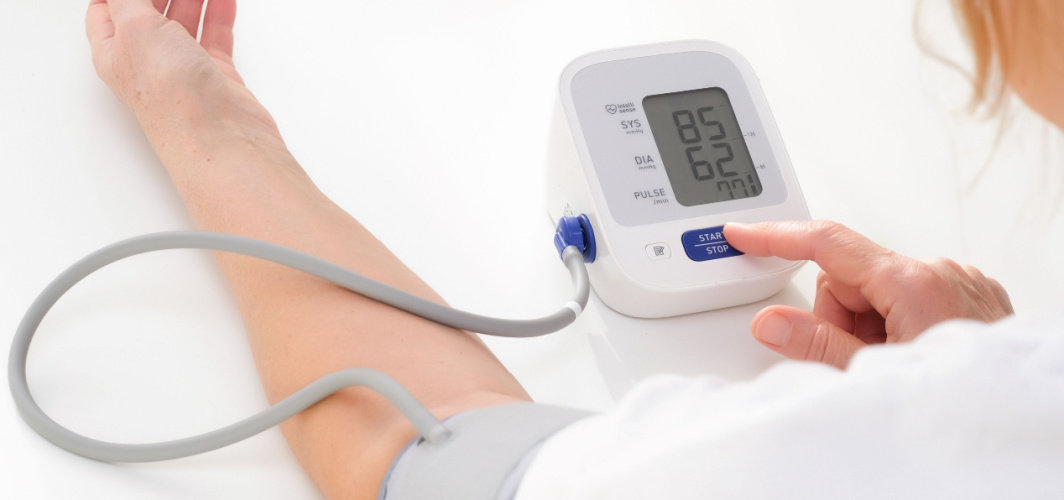- Home
- Blog
- General Health
Why Should You Have A Pulse Oximeter In Your First Aid Kit?
General Health
Why Should You Have A Pulse Oximeter In Your First Aid Kit?
By Apollo 24|7, Published on- 20 June 2023, Updated on -22 August 2024
Share this article
0
0 like

When it comes to medical emergencies, being prepared can make all the difference. In your first aid kit, one small device, called a pulse oximeter, can play a significant role in saving lives. You might wonder what a pulse oximeter is and why it is essential. It's a handy device that measures oxygen levels in your blood and heart rate. This article explores the significance of including a pulse oximeter in your first aid kit. Whether you're a parent, an adventurer, or someone who wants to be ready for the unexpected, understanding the importance of this little device can empower you to provide adequate aid in critical situations.
What Is A Pulse Oximeter?
A pulse oximeter is a small, portable device commonly used in hospitals, clinics, and at home. The primary purpose of a pulse oximeter is to measure oxygen saturation, which indicates how well oxygen is traveling to different body parts. It also measures the pulse rate, giving insight into heart rate and overall cardiovascular health.
It is non-invasive and painless, making it suitable for various situations. The device typically includes a probe or sensor placed on a person's finger, earlobe, or toe.
Benefits Of Using A Pulse Oximeter
The benefits of using a pulse oximeter include:
1. Early Detection of Hypoxia
A pulse oximeter detects low oxygen levels in the blood, allowing for timely intervention in respiratory distress.
2. Monitoring Respiratory Health
Regular use of a pulse oximeter tracks changes in oxygen saturation and pulse rate, providing insights into overall respiratory well-being.
3. Non-Invasive and Convenient
Pulse oximeters are easy to use, simply clipping onto a finger or body part, providing instant and continuous measurements without the need for complex procedures.
4. Portable and Versatile
These devices are compact and portable, suitable for use at home, during travel, or in healthcare settings for individuals of all ages.
5. Provides security
A pulse oximeter at home provides reassurance, especially for individuals with respiratory conditions, by allowing regular monitoring and prompt medical attention if needed.
6. Useful in High-Altitude Environments
Pulse oximeters are valuable in a first-aid kit for individuals traveling to high-altitude locations, as they assess oxygen saturation in low-oxygen environments, enabling adjustments or interventions.
7. Valuable in COVID-19 Management
Pulse oximeters gained significance during the pandemic, assisting in monitoring respiratory health, tracking oxygen levels, and detecting potential complications.
If you have a fever, sore throat, and your oxygen saturation is below 90%,
Why Include A Pulse Oximeter In Your First Aid Kit?
Including a pulse oximeter in your first aid kit is important, especially during emergencies. It helps with the following:
1. Detecting Low Oxygen Levels
A pulse oximeter can quickly tell you if someone has low oxygen levels during emergencies or accidents. Finding out about low oxygen levels early means taking immediate action to prevent damage to the vital organs of the body.
2. Assessing Breathing Problems
During breathing emergencies, a pulse oximeter helps you understand how severe the problem is. Checking oxygen saturation levels helps decide whether external oxygen or rescue breathing is necessary.
3. Monitoring Chronic Conditions
For people with unsteady breathing or low pulse rate, a pulse oximeter helps monitor them during emergencies to prevent the sudden worsening of their condition. By watching oxygen levels and pulse rate closely, you can quickly take the proper steps to ensure they're okay.
4. Checking for Silent Low Oxygen Levels
Silent low oxygen levels, also called happy hypoxia, happen when people have low oxygen without obvious signs, like in some respiratory infections. A pulse oximeter can find silent low oxygen levels, even if the person doesn't show any symptoms. This helps detect the problem early and get them medical help quickly.
Also read: Importance of at-home Pulse Oximeter in times of COVID-19
How to Measure with a Pulse Oximeter?
Steps to follow while using a pulse oximeter include:
1. Ensure the person's finger, earlobe, or toe is clean and free from dirt or nail polish.
2. Switch on the pulse oximeter and gently place the probe or sensor on the chosen site.
3. Allow a few seconds for the device to analyze the readings.
4. Once the measurements stabilize, note the oxygen saturation level and heart rate displayed on the device.
Readings of a Pulse Oximeter
Your pulse oximeter may display:
1. Oxygen Saturation (SpO2)
This reading indicates the percentage of oxygen in the blood. Normal levels are usually between 95% and 100%.
2. Heart Rate
The pulse oximeter also measures the person's heart rate, which is the number of times the heart beats per minute.
How Accurate Is A Pulse Oximeter?
Pulse oximeters are generally accurate and reliable devices for measuring oxygen saturation and pulse rate. However, certain factors may affect accuracy, such as:
- Excessive motion
- Poor circulation
- Nail polish or artificial nails
- Skin pigmentation
Despite these factors, pulse oximeters remain reliable tools for assessing oxygen saturation levels. To ensure optimal accuracy, follow the manufacturer's guidelines, minimize movement during measurement, and consult a healthcare professional for any concerns regarding accuracy.
Takeaway
Including a pulse oximeter in your first aid kit is essential for effective emergency response. This compact device enables early detection of oxygen deprivation, aids in assessing respiratory distress, and allows for regular monitoring of chronic health conditions. By equipping yourself with a pulse oximeter, you can confidently provide timely and appropriate first aid, ensuring the well-being of those in need. For more information, talk to the expert doctors.
Medically reviewed by Dr. Sonia Bhatt.
Services
General Health
Frequently asked questions
Yes, pulse oximeters are safe to use. They are non-invasive and painless devices that do not cause harm or discomfort when properly used. However, it is important to follow the manufacturer's instructions and consult with healthcare professionals for appropriate usage and interpretation of the readings.
Yes, pulse oximeters can be used for children and infants. However, choosing a pediatric-specific pulse oximeter designed to accurately measure oxygen saturation and pulse rate in smaller fingers or toes is important. Follow the manufacturer's guidelines for proper use.
The best sites for measuring oxygen levels in infants are the palm and the foot. Always use an infant pulse ox probe specifically designed for infants and ensure no gaps between the sensor and the skin.
Pulse oximeters are primarily used to measure oxygen saturation and pulse rate, but they cannot directly detect or diagnose specific health conditions. However, abnormal readings may indicate the need for further medical evaluation and assessment of underlying health conditions.
Place the pulse oximeter on your finger, and it will turn on automatically. Keep your hand relaxed and still for about one minute to ensure accurate readings.
Leave Comment
Services
Recommended for you

General Health
Is Fish Oil Safe for Older Adults and Children?
Explore the safety of fish oil for older adults and children. Get expert insights to make informed decisions about its use.

General Health
Step-By-Step Guide: How To Measure Blood Pressure At Home
Monitoring blood pressure at home is crucial for cardiovascular health. Understanding systolic and diastolic pressure, following proper measurement techniques, and knowing the implications of high and low blood pressure allow individuals to make informed decisions and maintain optimal levels for overall well-being.

General Health
Should You Take Calcium Supplements for Stronger Bones?
Subscribe
Sign up for our free Health Library Daily Newsletter
Get doctor-approved health tips, news, and more.

